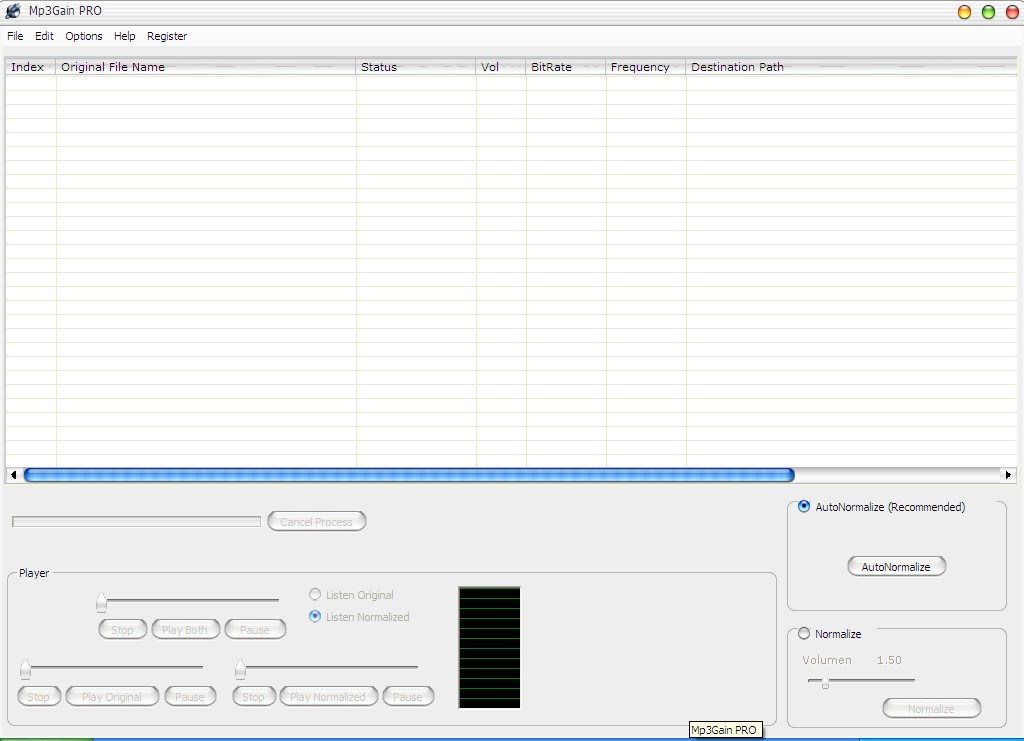

MP3 GAIN FOR WINDOWS 8.1 FREE
Good luck.MP3Gain is a free volume balancing tool, used to adjust your collection of mp3s so that they all play at the same volume. That’s it, now your volume levels should be undone to their previous/original levels. … depending on whether you’re Undoing individual tracks (“Track Gain”), albums (“Album Gain”) etc choose the appropriate option. “Modify Gain” -> “…” Step 4: Depending on your file or if it’s a folder containing files etc, choose the right option accordingly … Now, read this volume level and put the value in the “Target Normal Volume” box as shown below. Now this should temporarily load its previous (original) volume level under the ‘volume field’.Ĥ. “Modify Gain” -> “Undo Gain Changes” Step 1 … as you can see in ‘Red”, it indicates that the file has gained volume levels previously …ģ. First locate the file or folder and load it to QMP3Gain’s main window.

MP3 GAIN FOR WINDOWS 8.1 HOW TO
How to “Undo” a previously gained volume level?ġ. If interested, you can get it from this QMP3Gain project home page. These are just some of its main features to mention. As said, you can always Undo your changes whenever you want (it’s completely independent of the program as you can even uninstall QMP3Gain and re-install it again, then load a previously changed audio file, and you should still see its original volume levels). So use it with caution.īy default it’s disabled and most of us would want to keep it that way as it wouldn’t change anything in the meta-tags (holds information such as Artist, Title, Album, Year, Genre etc). However it might corrupt the track while doing so as well. So you can use this option to skip those errors and change the volumes.

This can be both useful and could also be dangerous.įor instance, if you have tracks with some issues (with meta-data not 100% accurate or issues with the header file etc), then QMP3Gain might not let you adjust the volume levels by default.

It has an option called “No Check for Layer i o ii” which skips quality checking before applying volume levels. Gain volume per track or for an entire album. An analysis tool that shows the default volume levels or gained volume levels (if you’ve done so already). I like “QMP3Gain” over the “MP3Gain” because (the features and UI designs are almost the same), QMP3Gain is written in Qt4 and looks modern 😉 where MP3Gain is a bit of an old tool which might not look that pretty if you use it with never Windows versions such as Vista and 7. Or it can be used with few other volume gaining back-ends as well. QMP3Gain is actually a Qt written (open-source user interface builder) front-end that uses a very popular tool called “MP3Gain”. So in that sense, if you’ve been searching for a free utility that lets you adjust audio levels (both single and batch file processing) with ease, then QMP3Gain is a tool that you should try. So it’s pretty darn important that we have the ability to rollback the changes whenever we want. So it’s pretty safe.Īnd the reason I wrote about that is, depending on the file and its content, let’s say that after gaining volume to somewhat higher decibel levels (dB), it can sometimes create audio distortions. This is done by simply adding a volume level field in the file’s “header” (this is a special location in a file that holds key information such as the codec that should be used to decode the content, file size, duration etc). Meaning that, you can always undo the changes and get the original volume levels back. This is useful because, there are some encoded music files (sometimes happen when downgrading from a high quality multichannel track to 2 channels stereo or when changing between audio codecs) that have either low or too high volumes by default.īut the good thing about volume normalization is that, most tools (including the one that I’m writing here) do it in a way that it’s 100% lossless. Audio volume gaining or normalization is the process of adjusting the audio level of an audio file (increasing/decreasing) and saving the changes permanently (so you don’t have to manually up/down the volume every time you play a track).


 0 kommentar(er)
0 kommentar(er)
